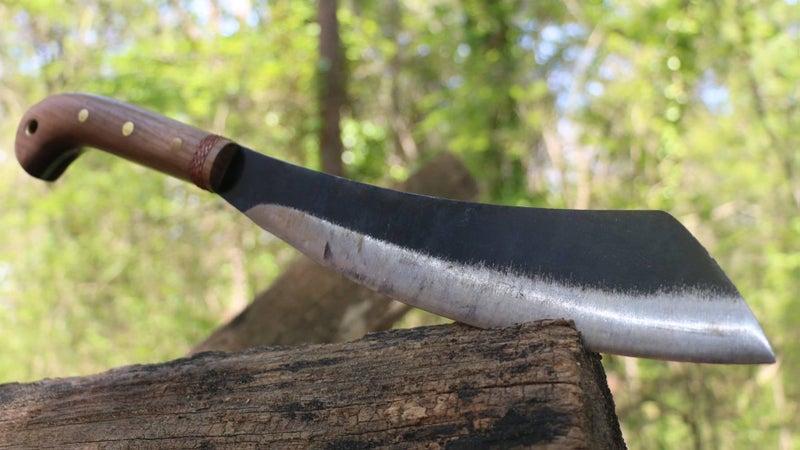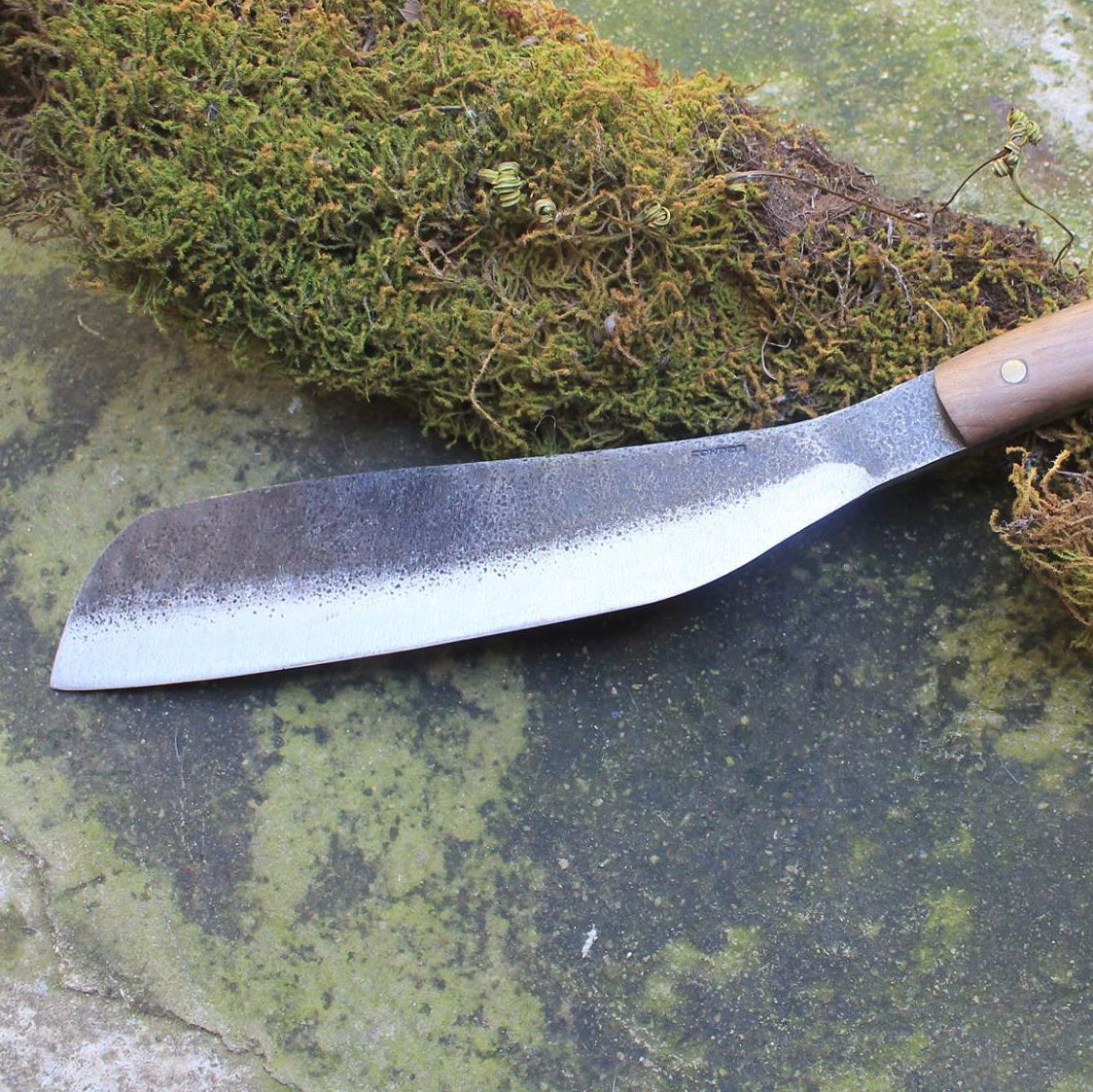Combining the reach of a machete with the heft of an axe, the parang excels at both chopping and detail work. It鈥檚 long been touted as the ultimate do-it-all survival tool by experts like Lofty Wiseman and Bear Grylls, but has聽lacked widespread commercial availability. Now, high-value tools from Gerber and Condor are changing that.
So the question is: Do you need a parang in your life?聽
The machete we鈥檙e all familiar with found popularity in the jungles and rainforests of Central and South America. There, it鈥檚 a near universal tool, used for everything from trail clearing to farm work to rebel uprisings. Long and thin鈥搕he blades are just a few millimeters thick鈥攖he machete gains its cutting prowess from the speed of your wrist, whipping through thin vegetation like vines and saplings.聽
The parang, on the other hand,聽evolved in the denser, woodier jungles of Malaysia and other Southeast Asian countries. Denser vegetation dictated a thicker, stronger, sometimes broader blade that gets its power from its weight. You swing a parang with your shoulder, and it connects with wood with the force of an axe. You can hack at a wrist-thick piece of wood with a machete for 10 minutes and not make it through. Get your parang swing right, and it鈥檒l sever that branch in a single blow.聽
Traditionally hammered into shape and sharpened by hand, parangs feature three distinct blade profiles: they鈥檙e thin and sharp near the handle, for preparing food and other fine work, broad and blunter in the middle, for chopping, and sharp and pointed toward聽the tip, for skinning and drilling. That, combined with their labor-saving heft, makes them incredibly versatile. Just the thing for hacking away at the jungle all day, then preparing dinner at night.聽
I first encountered a parang while shopping for machetes on Amazon ahead of a camping trip to Maui鈥檚 remote, densely jungled east side. The elegant sweep and materials of caught my eye, and its affordable price (just $50!), sealed the deal.聽
Based in El Salvador, is able to produce shockingly high-quality tools, then sell them here at very low prices. My parang is two feet long, in total,聽with a 17.5-inch long, quarter-inch thick blade. Its flexible,聽1075 high carbon steel is ideal for a large, hard-use tool like this one, and its smooth hardwood handle is all-day comfortable. A full-tang design, those wooden scales are bolted to the outside of the blade, which continues all the way through the handle聽for maximum strength. A nice leather sheath completes the package, resulting in a聽tool that聽embarrasses large survival knives costing three to four times as much, on both quality and usefulness.聽Compared to the gargantuan, 鈥攖he big knife to end all big knives鈥攖his $50 parang chops harder, looks nicer, is fitted with a better sheath. It's聽even better at fine carving.聽

During that week on Maui, I used the parang to chop firewood, clear vines, and open coconuts. My only regret: having聽eyes larger than my belt. At 24 inches long, this parang hangs too聽low down your leg, easily catching vines and fallen trees as you move through the jungle聽and making it nearly impossible to sit聽in a chair or vehicle. I鈥檇 have been much better off buying . A little pricier thanks to its fancy-looking hammered blade, that tool is much easier to manage with its 12-inch blade, but otherwise features the same quality and versatility. Its blade is also thinner at 3/16-inch. That鈥檚 the tool I鈥檇 recommend most people buy.聽
You鈥檒l find a variety of parang-style tools out there these days. Some made by Condor are called Dukus or Goloks, and while they differ slightly in geometry, they聽end up being very similar in purpose. Even cheaper is , which is a聽good buy if you鈥檙e not yet sure parang life is for you.聽
Using a parang is very intuitive. Just holding one makes you want to run around the house hacking at stuff. If that sounds dangerous, SAS Survival Guide author Lofty Wiseman is here to provide you with . Clearing brush, building shelters, opening coconuts, or just scaring your friends? A parang is the knife for you.聽


